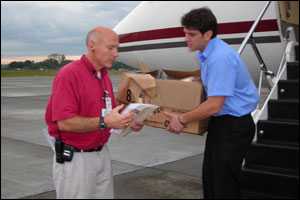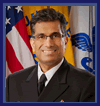CDC′s Disease Detectives: Solving High-Stakes Mysteries around the World

In late September, 2006, headlines declared a "mystery illness" responsible for numerous deaths and almost two–dozen seriously ill patients in the Latin American nation of Panama. As the Minister of Health, Camilo Alleyne, worked to keep people informed and calm, officials from the ministry and the Gorgas Memorial Institute of Health Research (GMIHR) in Panama City requested help from the CDC, Pan American Health Organization (PAHO), and U.S. Food and Drug Administration (FDA) in tracking the unknown killer.
Originally there were far more questions than answers: Is it contagious? Is it somehow related to West Nile Virus? Dengue fever? Influenza? No one knew for sure.
Doctors working in the Social Security hospital recognized and began to track a pattern of sickness; diarrhea and fever progressed to acute kidney failure, paralysis, and death. It seemed to strike mostly men over 60 who were receiving treatments for high blood pressure, diabetes, or kidney disorders. The doctors reported the suspicious pattern to the Ministry of Health, which requested international help.

Rima Khabbaz, MD, Deputy Director for Infectious Disease, explained the reality of being a first–year EIS officer,…“When you are a first–year officer, you are new but you ARE CDC. When you are on an outbreak, it can be intimidating but it can be quite powerful as well. You have all of CDC behind you.”
Closing in on a Killer Disease

The director of GMIHR contacted CDC′s Global Health offices on October 2. CDC′s Global Disease Detection (GDD) division immediately began coordinating CDC′s response. Dr. Joshua Schier led CDC′s deployment team, which included two medical epidemiologists, a laboratorian, a neuro–epidemiologist, a bi–lingual epidemiologist, and risk communication specialist. They and others hit the ground running in Panama, gathering medical samples from patients—as well as from a variety of suspected poisoning sources—and sending them back to the labs in Atlanta.
Early evidence, such as no clustering of sickness within families and the fact that no healthcare providers were getting sick, suggested the event was not contagious. CDC′s team still tested specimens of kidney and nerve tissue while simultaneously examining products such as high blood pressure medication and simple cough syrup found in patients′ homes. Just nine days after the CDC team landed in Panama, diethylene glycol (DEG) – often used as an industrial solvent and component of antifreeze and brake fluid – was isolated as the deadly culprit.
“From the start, this took a lot of effort from a lot of people," says Dr. Carol Rubin, then chief of the Health Studies Branch, NCEH. "This amazing collaboration identified the probable cause of this syndrome within a remarkable 11 days of the initiation of the investigation by the Ministry of Health."
Thanks to solid epidemiological detective work and round–the–clock evidence gathering on the ground in Panama, the answer was found.

“If there′s a mystery disease out there anywhere in the world, people generally send those samples to the Special Pathogens Branch to help them figure out what it is,” says, Ali Khan, MD, Director of CDC′s Center for Terrorism and Emergency Response. “About 75‰ to 85‰ of emerging infections are zoonotic, meaning transmitted from animals to people, or vector–borne, meaning transmitted from mosquitoes and ticks.”
- Page last reviewed: March 19, 2014
- Page last updated: March 19, 2014
- Content source:


 ShareCompartir
ShareCompartir